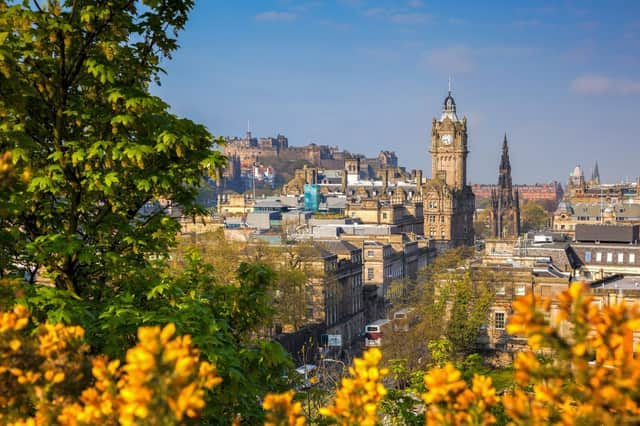Decisions taken over the next decade will be vital to our city’s prospects - Susan Dalgety


A report in this newspaper last week reveals that the city’s population actually fell during the 1970s, from 459,000 to 427,000.
The decline that started in the swinging sixties continued through the 1980s, so by 1989 there were only 419,000 people living the Capital.
Advertisement
Hide AdAdvertisement
Hide AdToday, there are 559,000 – a dramatic increase of 33 per cent from the year I set up home in Currie. And by 2035, just over a decade away, population experts reckon the city will be bulging at the seams with more than 600,000 residents.
It is not just the size of the city’s population that is changing, its personality is too.
My first impressions of Edinburgh all those years ago were of a beautiful cityscape but a dour place. The spirit of John Knox hovered over the city centre. St Giles Cathedral was busier than Princes Street on a Sunday morning.
Coffee shops were largely non-existent and bars were dark places where morose men went to drown their sorrows in several pints of McEwans heavy.
Advertisement
Hide AdAdvertisement
Hide AdEvery August brought an annual respite from the Presbyterian doom when the city was taken over by the London luvvies and Oxbridge students for the International Festival and Fringe, but even that glorious celebration of culture felt alien to the majority of the city’s residents.
It was for people who pretended to understand avant-garde theatre and preferred Bach to Bowie. Not for the likes of us, living in the city’s outer neighbourhoods.
Now Edinburgh has a festival atmosphere all year round. Even in February, the streets throng with visitors from across the globe. It has become a truly international city, full of colour and life.
No wonder the population just keeps growing: who wouldn’t want to live here? To paraphrase Samuel Johnson, the man who compiled the first dictionary back in 1755, when a woman is tired of Edinburgh, she is tired of life.
Advertisement
Hide AdAdvertisement
Hide AdBut with this growth comes huge challenges. We have an official housing emergency, with not enough affordable homes for the people who already live here, let alone the tens of thousands more predicted over the next decade.
Our roads are a disgrace, with some of the worst potholes in the country. Even the council’s ‘Pothole Killer’ machine can’t make up for decades of underinvestment in the city’s roads and pavements.
And there is a growing tension between the long term needs of the city’s residents and the short term fixes required by tourists. Edinburgh may be a top Instagram location, but it is also a working city.
Decisions taken over the next decade will be vital to our city’s prospects, but the Capital’s future is too important to leave to the city council alone.
Advertisement
Hide AdAdvertisement
Hide AdThe Scottish government must recognise Edinburgh’s importance to the rest of the country. It recently published a set of policy papers entitled Building a New Scotland, written for the unlikely event Scotland ever leaves the UK.
What we actually need are policy papers for the here and now – so why not one on Building Edinburgh for the Future?
Comment Guidelines
National World encourages reader discussion on our stories. User feedback, insights and back-and-forth exchanges add a rich layer of context to reporting. Please review our Community Guidelines before commenting.